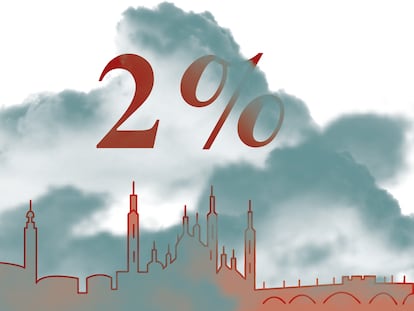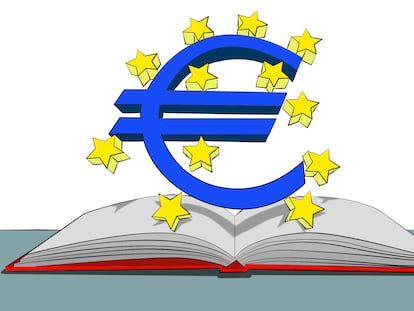The new economic policy
National security now dominates decisions, as the recent programs of investment restrictions, subsidies, and sanctions in the semiconductor sector show

Paraphrasing the Danish philosopher Søren Kierkegaard, life can only be understood backwards, but it must be lived forwards. The dialectical process of action/reaction implies that the final outcome, what we later confidently describe and explain as the result of a rational and internally logical process, rarely coincides with the initial intentions. The final outcome is the cumulative effect of many decisions, some planned, others improvised, often the result of chance and serendipity. To understand the new economic policy, focused on investment rather than savings, much more micro than macro, with actions that limit – instead of promoting – the invisible hand of the market, we must look back.
When I joined the International Monetary Fund (IMF), in the late 1990s, the paradigm was clear: economic policy consisted of liberalizing the economy, stabilizing inflation and reducing deficits. One of my first bosses uttered a lapidary phrase at a meeting: in his long career as an IMF economist, he had never recommended a less austere fiscal policy than the one proposed by the government. Economies could always be made more flexible and more open, the public sector and deficits smaller. You could always be more virtuous in the quest for growth.
This consensus could be understood looking back. The very long shock wave of the energy crisis, the management of the fall of the iron curtain, the difficulties of European integration, the endless crises in emerging countries, were problems that could be solved with an ever closer approximation to the neo-Keynesian economic model – not neoliberal, a concept whose abuse has voided it of meaning – of representative agents. Price stability, fiscal discipline, and deregulation and liberalization were the tools for maximizing potential growth.
The end of history that Fukuyama preached – the dominance of liberal democracy – coincided with the end of economic history – the dominance of the neo-Keynesian model. But, slowly, the limits of this model began to appear. The fiasco of the privatizations of the former Soviet Union raised the first alarms. The IMF debated adding to its mandate the liberalization of the balance of payments, as a logical extension of the liberalization of the balance of trade, but it did not come to fruition. Is it possible that liberalization could go too far? The emerging countries, chastened after their multiple crises in the 1990s, began to take action, actively managing their exchange rates and accumulating foreign reserves as a self-insurance mechanism, ignoring the new lending instruments offered by the IMF. Looking back, that’s where the process of rebalancing efficiency and resilience began.
The 2007-08 financial crisis marked a turning point: perhaps financial regulation had relied too much on the virtues of the invisible hand for risk management, and more and better intervention was needed. Financial regulatory reform significantly increased the capital and liquidity requirements of the banking sector and restricted its speculative activities. The next step was the debate, initially timid and almost hidden, about the use of capital controls. Hiding behind the euphemism “capital flow management,” the IMF gradually allowed, and later even encouraged, the use of capital controls as an economic policy instrument. How times had changed.
After the crisis, deflation had become the enemy to beat, and monetary policy, once boring and minimalist, had become an alphabet soup of asset purchases programs and liquidity provision that acted on a wide spectrum of financial assets. The Greek debt restructuring scare had kept fiscal discipline as the last bastion of the neo-Keynesian paradigm, but the persistence of deflationary risk and rising inequality opened the door to a more active use of fiscal policy. The IMF added the icing on the cake, suggesting that reducing inequality should not only be an end in itself, but could help improve potential growth. Growth was no longer enough, the objective was inclusive growth. The focus shifted from savings onto investment, the protective state expanded, the paradigm evolved.
But the US, during the Trump administration, went further and broke a taboo: the active use of tariffs and trade policy for purposes unrelated to international trade. The trade war with China went far beyond correcting trade distortions, and implicitly marked a worrisome return to protectionism and the beginning of the end of the multilateral management system for international trade. The Biden administration has not only maintained the tariffs, but has further promoted the use of trade policy for strategic objectives. The concept of “friendshoring” – establishing trade relations only with allied countries – implies an economic re-regionalization with winners and losers.
The Covid crisis, whose management was dominated by an active fiscal policy, and the Russian invasion of Ukraine, which inserted energy independence and national security at the core of economic policy, gave the final push to the transformation of economic policy. It now contemplates a wide panoply of actions – subsidies, sanctions, price limits, specific taxes, tariffs, restrictions – together with an activist industrial policy, what Janet Yellen, the secretary of the US Treasury, has called “modern supply-side economics.” National security now dominates economic policy, as the recent programs of investment restrictions, subsidies, and sanctions in the semiconductor sector show.
The economic policy of the 1990s was macroeconomic policy, focused on growth. The economic policy of the 21st century is microeconomic policy, focused on resilience. On the one hand, it is the logical evolution: as the Tinbergen rule dictates, multiple objectives – growth, inequality, climate change, energy independence, national security – require multiple instruments. On the other hand, it creates a cloud of uncertainty: a multiplicity of actions, some improvised, is accumulating without having a global vision and, therefore, an understanding of the joint effect of all the measures. We lack a theory on the cost and effectiveness of using economic measures as geostrategic instruments. Is the normalization of the use of tariffs, subsidies, and sanctions desirable? What are their long-term and collateral effects, and what is the mechanism to dismantle them? Is the use of economic sanctions for geostrategic reasons more efficient than the reinforcement of military instruments? In Europe, should these public goods be designed, delivered, and financed at the national level or, preferably, at the European level? And, above all, what is the net impact on economic growth and the welfare of citizens?
We are creating the new economic policy forward, but it will take time to understand it backwards.
Tu suscripción se está usando en otro dispositivo
¿Quieres añadir otro usuario a tu suscripción?
Si continúas leyendo en este dispositivo, no se podrá leer en el otro.
FlechaTu suscripción se está usando en otro dispositivo y solo puedes acceder a EL PAÍS desde un dispositivo a la vez.
Si quieres compartir tu cuenta, cambia tu suscripción a la modalidad Premium, así podrás añadir otro usuario. Cada uno accederá con su propia cuenta de email, lo que os permitirá personalizar vuestra experiencia en EL PAÍS.
¿Tienes una suscripción de empresa? Accede aquí para contratar más cuentas.
En el caso de no saber quién está usando tu cuenta, te recomendamos cambiar tu contraseña aquí.
Si decides continuar compartiendo tu cuenta, este mensaje se mostrará en tu dispositivo y en el de la otra persona que está usando tu cuenta de forma indefinida, afectando a tu experiencia de lectura. Puedes consultar aquí los términos y condiciones de la suscripción digital.
More information
Últimas noticias
David Bowie, the galactic thinker who encouraged us to break new ground
John Berger and the loss of rural culture
From police officer to bloodthirsty kidnapper: Terror in Mexico during the years of ‘The Ear Chopper’
Alain Aspect, Nobel laureate in physics: ‘Einstein was so smart that he would have had to recognize quantum entanglement’
Most viewed
- David King, chemist: ‘There are scientists studying how to cool the planet; nobody should stop these experiments from happening’
- Reinhard Genzel, Nobel laureate in physics: ‘One-minute videos will never give you the truth’
- Oona Chaplin: ‘I told James Cameron that I was living in a treehouse and starting a permaculture project with a friend’
- Mexico completes its trade shift with the entry into force of tariffs on China and countries without trade agreements
- Sinaloa Cartel war is taking its toll on Los Chapitos











































